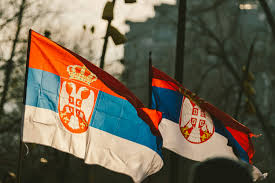The world map may seem settled, but history never truly stops drawing its borders as in the past few decades, new countries have emerged.
Some through fierce struggles for independence, others through peaceful separations or international agreements.
These countries, still carving their identities, stand as symbols of resilience, hope, and the complex quest for self-determination in the modern era.
From the war-scarred plains of Africa to the tranquil islands of the Pacific, here are the five youngest countries in the world, each with a unique story of birth
1. South Sudan (Independence: 2011)
South Sudan officially became independent on July 9, 2011, breaking away from Sudan after decades of civil war. The independence vote followed years of negotiation and global attention, marking the world’s newest internationally recognized state.
Despite its youthful optimism, South Sudan has faced immense challenges — including ethnic conflict, displacement, and economic instability. Yet, the country remains rich in natural resources and cultural diversity, with ongoing peace efforts aiming to rebuild its fragile foundation.
2. Kosovo (Independence: 2008)
Kosovo declared independence from Serbia on February 17, 2008, following years of ethnic tension and conflict in the Balkans. While over 100 countries now recognize Kosovo, others — including Serbia and some major global powers — still do not.
The small landlocked nation has made strides toward democracy and economic reform, though it continues to navigate complex regional politics as it seeks full international legitimacy and membership in the United Nations.
3. Montenegro & Serbia (Independence: 2006)
In 2006, Montenegro voted to dissolve its union with Serbia, leading both to emerge as separate sovereign nations. The decision came through a peaceful referendum, marking one of Europe’s calmest transitions to independence.
Since then, Montenegro has pursued European Union integration and tourism-driven growth, while Serbia remains a key player in Balkan politics and economics. Both nations continue to redefine their paths in a post-Yugoslav era.
4. East Timor (Timor-Leste) (Independence: 2002)
Nestled in Southeast Asia, East Timor achieved full independence on May 20, 2002, after decades of struggle against Indonesian occupation. A 1999 referendum in favor of independence led to widespread violence before the UN intervened to stabilize the nation.
Today, East Timor is steadily developing its economy through oil exports, agriculture, and tourism. Its people continue to balance rapid modernization with the preservation of traditional Timorese culture and language.
5. Palau (Independence: 1994)
The island nation of Palau gained independence on October 1, 1994, under a Compact of Free Association with the United States. Once part of the U.N. Trust Territory of the Pacific Islands, Palau is now a self-governing state known for its pristine coral reefs, strong environmental policies, and small but proud population of about 21,000.
The post 5 youngest countries in the world appeared first on Vanguard News.

